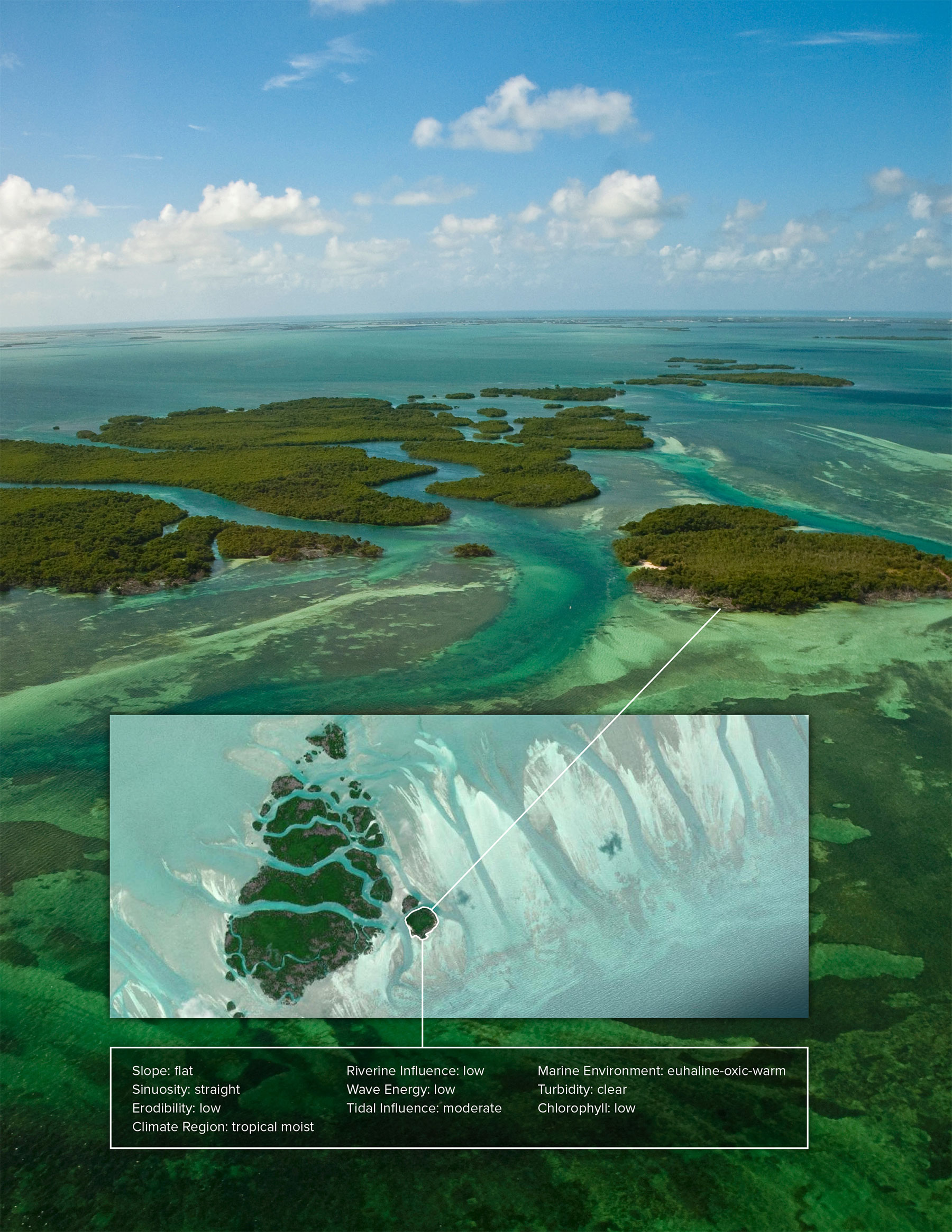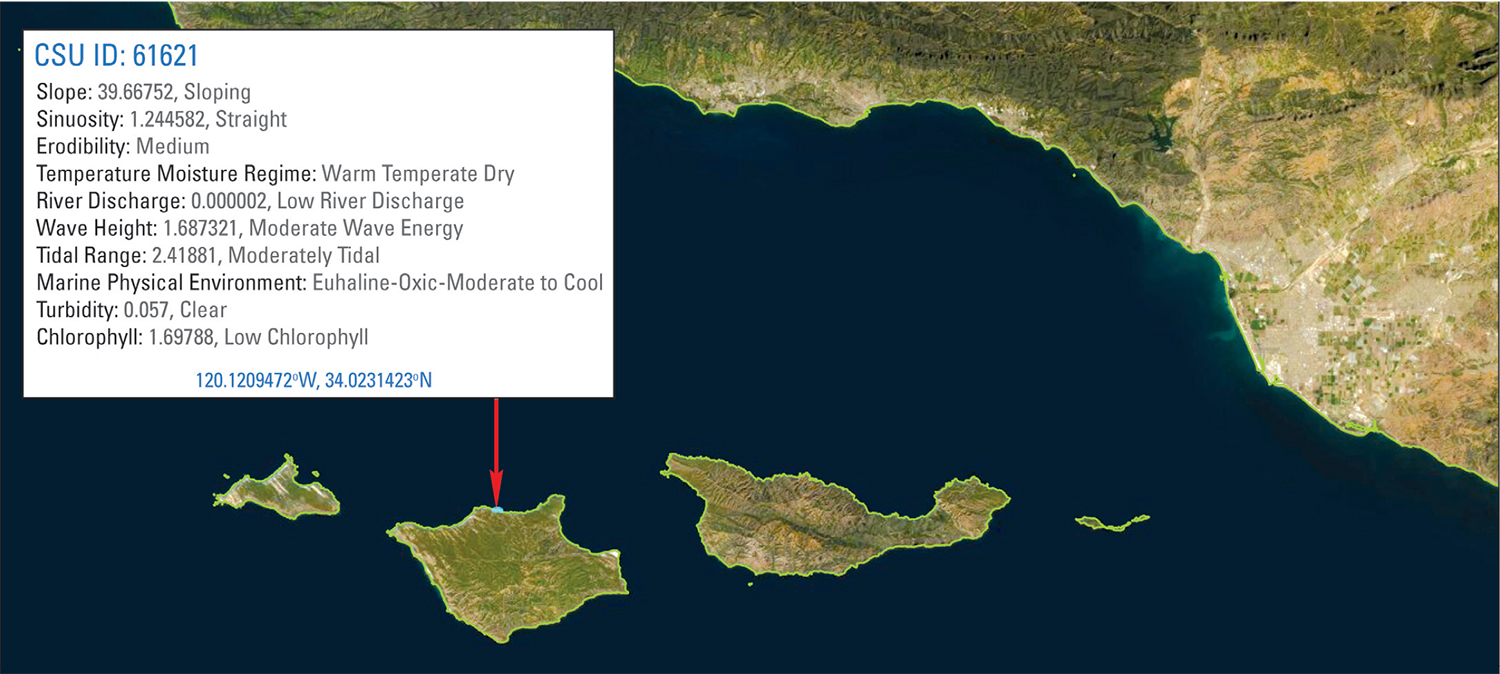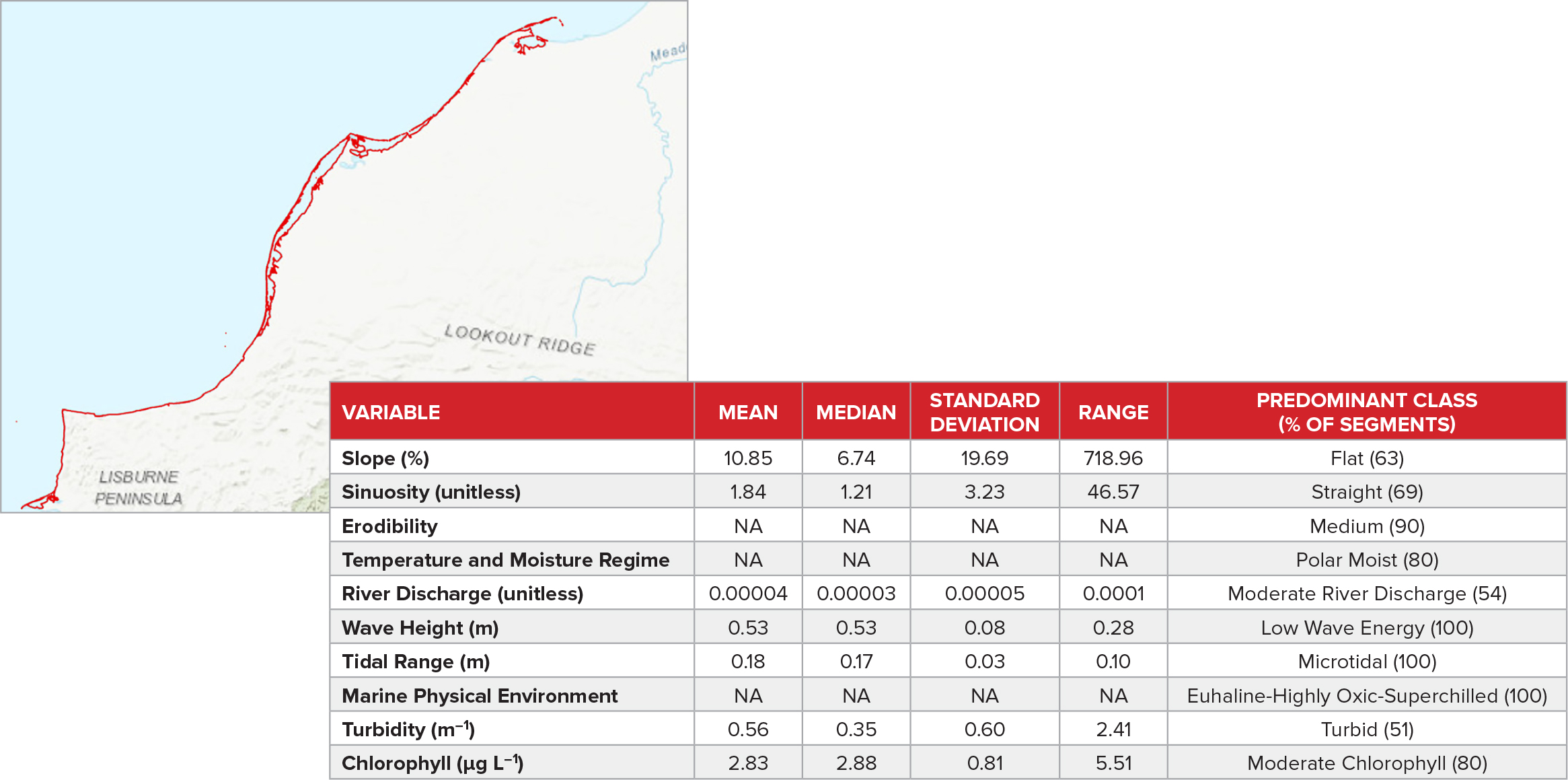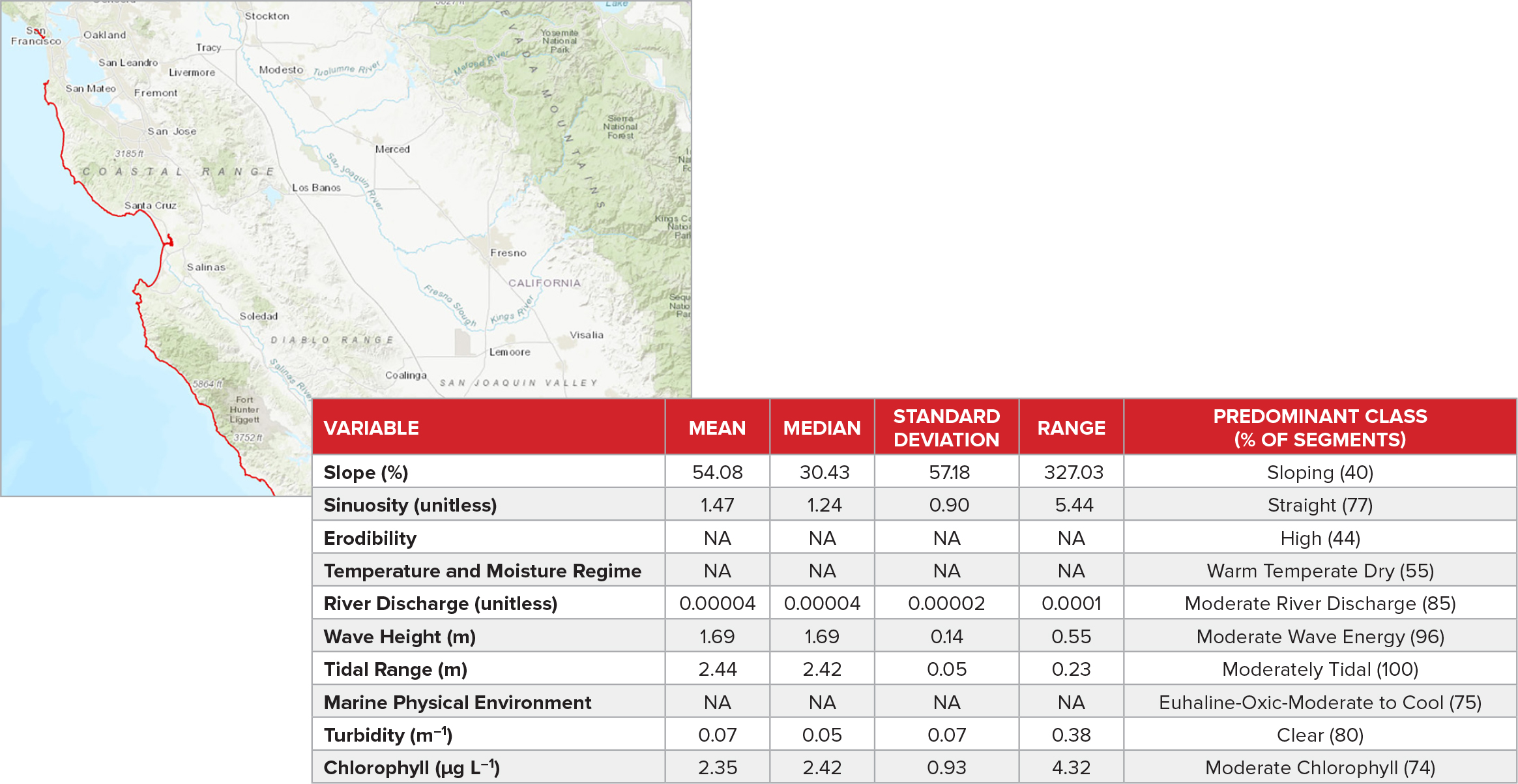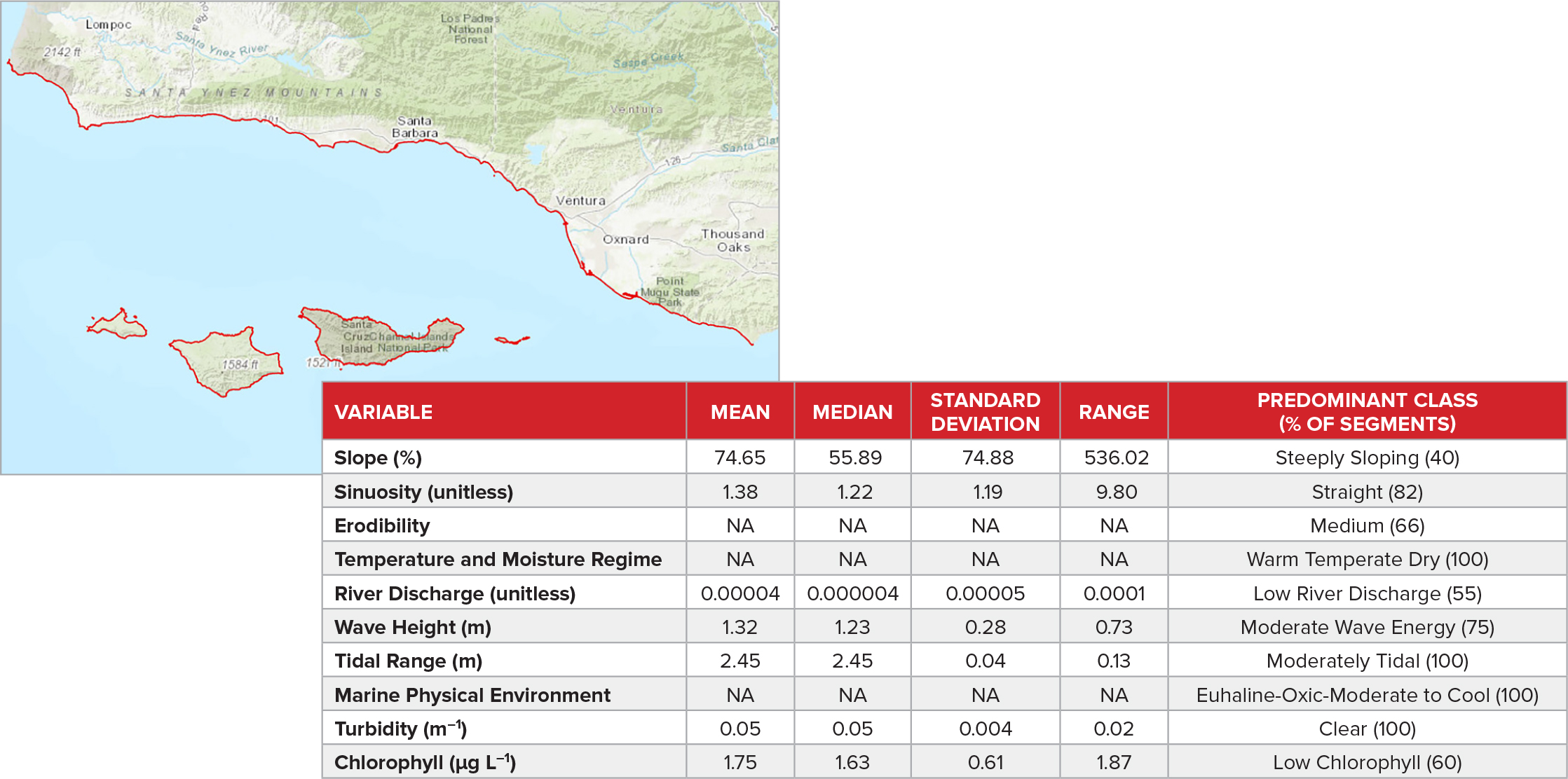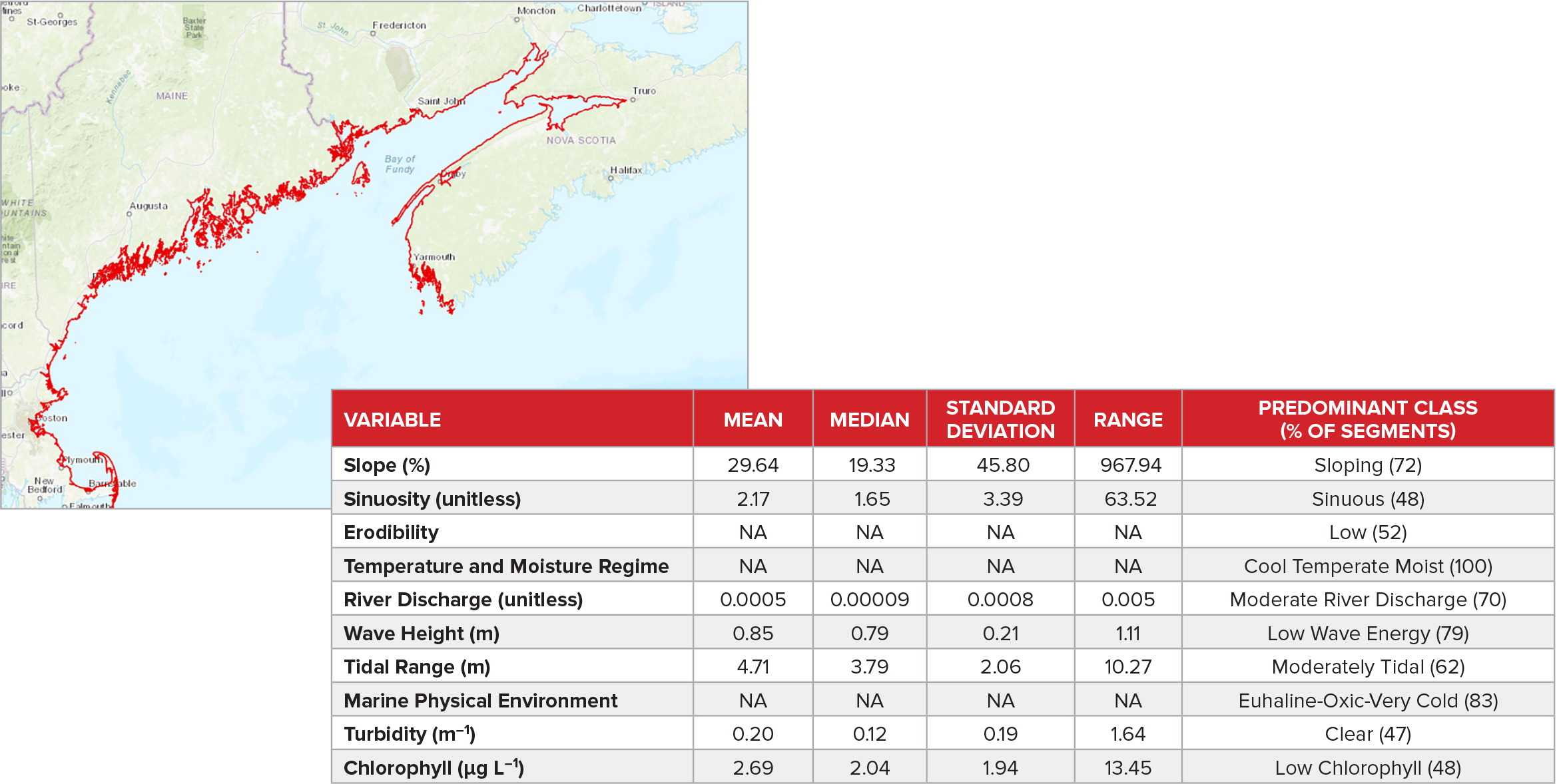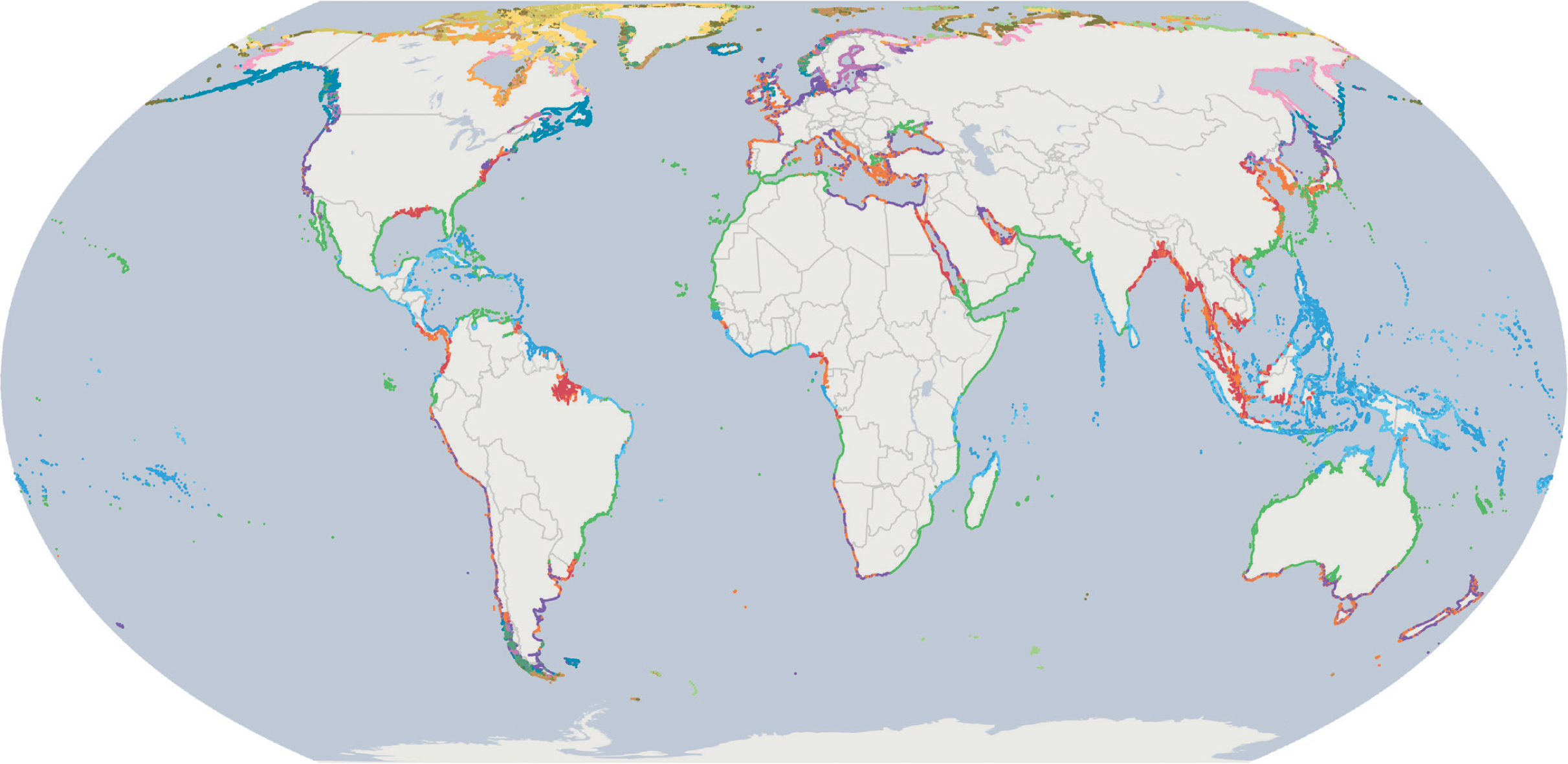Bailey, R. 2009. Ecosystem Geography: From Ecoregions to Sites, 2nd ed. Springer-Verlag, New York, NY, 251 pp.
Barbier, E., S. Hacker, C. Kennedy, E. Koch, A. Stier, and B. Silliman. 2011. The value of estuarine and coastal ecosystem services. Ecological Monographs 81(2):169–193, https://doi.org/10.1890/10-1510.1.
Bartley, J., R. Buddemeier, and D. Bennett. 2001. Coastline complexity: A parameter for functional classification of coastal environments. Journal of Sea Research 46(2):87–97, https://doi.org/10.1016/S1385-1101(01)00073-9.
Boyd, R., R. Dalrymple, and B. Zaitlin. 1992. Classification of clastic coastal depositional environments. Sedimentary Geology 80(3):139–150, https://doi.org/10.1016/0037-0738(92)90037-R.
Burke, L., Y. Kura, K. Kassem, C. Revenga, M. Spalding, and D. McAllister. 2000. Pilot Analysis of Global Ecosystems: Coastal Ecosystems. World Resources Institute, Washington, DC, 93 pp., https://www.wri.org/publication/pilot-analysis-global-ecosystems-coastal-ecosystems.
Cooper, J., and S. McLaughlin. 1998. Contemporary multidisciplinary approaches to coastal classification and environmental risk analysis. Journal of Coastal Research 14(2):512–524.
Davies, J. 1980. Geographical Variation in Coastal Development. Geomorphology Text Series 4, Longman Group Ltd., London, 204 pp.
Davis, R., and J. Fitzgerald. 2020. Beaches and Coasts, 2nd ed. John Wiley and Sons Ltd., 518 pp., https://doi.org/10.1002/9781119334491.
Estes, L., P. Elsen, T. Treuer, L. Ahmed, K. Caylor, J. Chang, J. Choi, and E. Ellis. 2018. The spatial and temporal domains of modern ecology. Nature Ecology and Evolution 2:819–826, https://doi.org/10.1038/s41559-018-0524-4.
FGDC (Federal Geographic Data Committee). 2012. Coastal and Marine Ecological Classification Standard Version 4.0. Report FGDC-STE-18-2012, Federal Geographic Data Committee Secretariat, US Geological Survey, Reston, Virginia, 343 pp.
Fick, S., and R. Hijmans. 2017. WorldClim 2: New 1-km spatial resolution climate surfaces for global land areas. International Journal of Climatology 37(12):4,302–4,315, https://doi.org/10.1002/joc.5086.
Foley, M., B. Halpern, F. Micheli, M. Armsby, M. Caldwell, C. Crain, E. Prahler, N. Rohr, D. Sivas, M. Beck, and others. 2010. Guiding ecological principles for marine spatial planning. Marine Policy 34(5):955–966, https://doi.org/10.1016/j.marpol.2010.02.001.
Gagné, T., G. Reygondeau, C. Jenkins, J. Sexton, S. Bograd, E. Hazen, and K. Van Houtan. 2020. Towards a global understanding of the drivers of marine and terrestrial biodiversity. PLoS ONE 15(2):e0228065, https://doi.org/10.1371/journal.pone.0228065.
Harris, P., A. Heap, S. Bryce, R. Porter-Smith, D. Ryan, and D. Heggie. 2002. Classification of Australian clastic coastal depositional environments based upon a quantitative analysis of wave, tidal, and river power. Journal of Sedimentological Research 72(6):858–870, https://doi.org/10.1306/040902720858.
Hartmann, J., and N. Moosdorf. 2012. The new global lithological map database GLiM: A representation of rock properties at the Earth surface. Geochemistry, Geophysics, Geosystems 13(12)1–37, https://doi.org/10.1029/2012GC004370.
Inman, D., and C. Nordstrom. 1971. On the tectonic and morphologic classification of coasts. Journal of Geology 79(1):1–21, https://doi.org/10.1086/627583.
John, S., D. Brew, and R. Cottle. 2017. Coastal ecology and geomorphology. Pp. 234–296 in Methods of Environmental and Social Impact Assessment, 4th ed. R. Therivel and G. Wood, eds, Routledge, New York, 740 pp., https://doi.org/10.4324/9781315626932.
Kavanaugh, M., M. Oliver, F. Chavez, R. Letelier, F. Muller-Karger, and S. Doney. 2016. Seascapes as a new vernacular for ocean monitoring, management and conservation. ICES Journal of Marine Science 73(7):1,839–1,850, https://doi.org/10.1093/icesjms/fsw086.
Montes, E., A. Djuhuus, F. Muller-Karger, D. Otis, C. Kelble, and M. Kavanaugh. 2020. Dynamic satellite seascapes as a biogeographic framework for understanding phytoplankton assemblages in the Florida Keys National Marine Sanctuary, United States. Frontiers in Marine Science 7:575, https://doi.org/10.3389/fmars.2020.00575.
Moosdorf, N., S. Cohen, and C. von Hagke. 2018. A global erodibility index to represent sediment production potential of different rock types. Applied Geography 101:36–44.
NEA and UNEP-WCMC (Norwegian Environment Agency and United Nations Environment Program – World Conservation Monitoring Center). 2019. Environmental Sensitivity Mapping for Oil and Gas Development – A High-Level Review of Methodologies. 40 pp., https://www.unep-wcmc.org/system/comfy/cms/files/files/000/001/635/original/Report_A_Environmental_Sensitivity_Mapping_high_level_review_of_methodology_final.pdf.
Neilson, B., and M. J. Costello. 1999. The relative lengths of seashore substrata around the coastline of Ireland as determined by digital methods in a Geographical Information System. Estuarine, Coastal and Shelf Science 49:501–508, https://doi.org/10.1006/ecss.1999.0507.
Nyberg, B., and J. Howell. 2016. Global distribution of modern shallow marine shorelines – Implications for exploration and reservoir analogue studies. Marine Petroleum Geology 71:83–104, https://doi.org/10.1016/j.marpetgeo.2015.11.025.
Osadchiev, A., and P. Zavialov. 2019. Structure and dynamics of plumes generated by small rivers. Pp. 125–144 in Estuaries and Coastal Zones: Dynamics and Response to Environmental Changes. J. Pan and A. Devlin, eds, IntechOpen, https://doi.org/10.5772/intechopen.87843.
Ryabinin, V., J. Barbière, P. Haugan, G. Kullenberg, N. Smith, C. McLean, A. Troisi, A. Fischer, S. Aricò, T. Aarup, and others. 2019. The UN Decade of Ocean Science for Sustainable Development. Frontiers in Marine Science 6:470, https://doi.org/10.3389/fmars.2019.00470.
Sayre, R., D. Wright, S. Breyer, K. Butler, K. Van Graafeiland, M. Costello, P. Harris, K. Goodin, J. Guinotte, Z. Basher, and others. 2017. A three-dimensional mapping of the ocean based on environmental data. Oceanography 30(1):90–103, https://doi.org/10.5670/oceanog.2017.116.
Sayre, R., S. Noble, S. Hamann, R. Smith, D. Wright, S. Breyer, K. Butler, K. Van Graafeiland, C. Frye, D. Karagulle, and others. 2019. A new 30-meter resolution global shoreline vector and associated global islands database for the development of standardized ecological coastal units. Journal of Operational Oceanography 12(sup2):S47–S56, https://doi.org/10.1080/1755876X.2018.1529714.
Sayre, R., D. Karagulle, C. Frye, T. Boucher, N. Wolff, S. Breyer, D. Wright, M. Martin, K. Butler, K. Van Graafeiland, and others. 2020. An assessment of the representation of ecosystems in global protected areas using new maps of World Climate Regions and World Ecosystems. Global Ecology and Conservation 21:e00860, https://doi.org/10.1016/j.gecco.2019.e00860.
Sayre, R., K. Butler, K. Van Graafeiland, S. Breyer, D. Wright, C. Frye, D. Karagulle, M. Martin, J. Cress, T. Allen, and others. 2021. Earth’s coastlines. Chapter 1 in GIS for Science Volume 3 – Maps for Saving the Planet. D. Wright and C. Harder, eds, Esri Press, Redlands, CA, https://doi.org/10.17128/9781589485877.
Thom, B., I. Eliot, M. Eliot, N. Harvey, D. Rissik, C. Sharples, A. Short, and C. Woodroffe. 2018. National sediment compartment framework for Australian coastal management. Ocean and Coastal Management 154:103–120, https://doi.org/10.1016/j.ocecoaman.2018.01.001.


